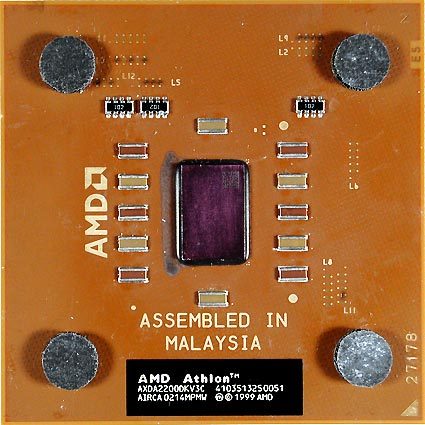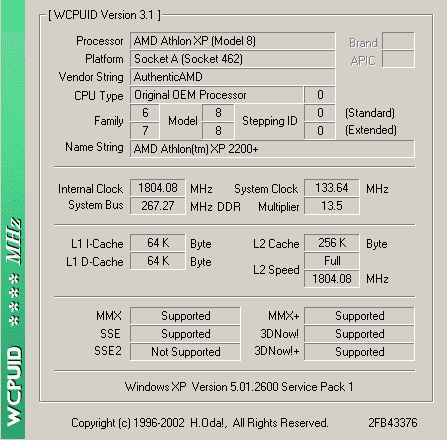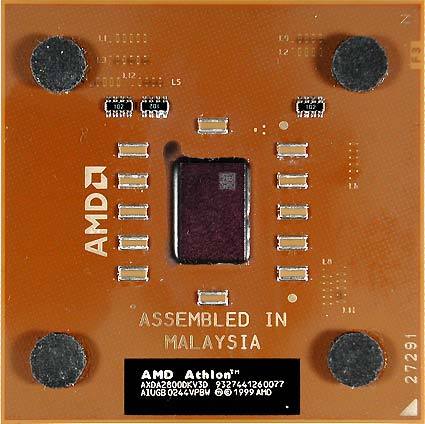Benchmark Marathon: 65 CPUs from 100 MHz to 3066 MHz
Athlon XP 1700+ To 2800+: June 2002 To October 2002
AMD piles on the pressure with Thoroughbred: the Thoroughbred "B" contains eight rather than seven layers, which had been the norm for the Thoroughbred "A". Moreover, there were differences in the speed of the FSB. The XP 1700+ to XP 2400+ ran at 133 MHz, while the XP 2600+ and XP 2800+ were capable of utilizing 166 MHz. The last CPU mentioned here has not reached the shops, although samples have been issued to the press.
Athlon XP 2200+ with Thoroughbred B core.
Athlon XP 2500+ To 3000+: January 2003 To Date
The last evolutionary stage of the AMD Athlon was reached with the introduction of the Barton core. Compared with its predecessor, the L2 cache was doubled to 512 kB and its clock speed was reduced at the same time. The number of transistors has now reached 54.3 million and thermal dissipation is 74.3 W. For the first time within a processor generation, AMD has reduced CPU performance compared with a previous model (XP 2800+).
Does it exist or not? AMD Athlon XP 2800+ for 166 MHz FSB and 256 kB L2 cache.
Get Tom's Hardware's best news and in-depth reviews, straight to your inbox.
Current page: Athlon XP 1700+ To 2800+: June 2002 To October 2002
Prev Page Athlon XP 1500+ To 2100+: October 2001 To March 2002 Next Page Test Setup And Details

